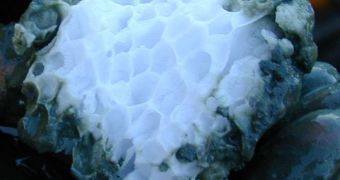One of the most important problems affecting natural gas and oil extraction operations conducted at sea is the formation of frozen methane hydrates inside wells and well casings. They are very difficult to break up, and cost millions of dollars to remove. Scientists now believe they have found a solution.
Investigators with the Massachusetts Institute of Technology (MIT), in Cambridge, say that their approach inhibits the formation of methane hydrates from the get-go, allowing operators to continue extraction without delay.
Frozen methane hydrates are the main reasons the dome lowered over the ruptured wellhead of the Deepwater Horizon rig, in 2010, did not work. As soon as the containment structure was put into place, it was immediately clogged by these chemicals.
The thing that makes methane hydrates so dangerous is the fact that they tend to freeze up when exposed to cold temperatures. Since most of the wells they affect are located deep under the waves, low temperatures and high pressures are not a problem.
MIT associate professor of mechanical engineering Kripa Varanasi and his team may have found a new solution to this issue. Their approach is detailed in a paper published in the latest issue of the journal Physical Chemistry Chemical Physics.
MIT mechanical engineering graduate student J. David Smith was the lead author of the investigation.
Expensive heating systems or chemical additives are currently being used to avoid the buildup of methane hydrates, in a process called flow assurance. “The oil and gas industries currently spend at least $200 million a year just on chemicals” that ensure material flow, Varanasi explains.
What the expert and his group are proposing is the creation of special, passive coatings on the inside of wells. These materials would prevent the methane hydrates from adhering to these surfaces in the first place.
These coatings would feature a cage-like crystalline structure called clathrate, which would literally trap methane molecules in a lattice of water molecules. The new investigation was sponsored by the MIT Energy Initiative-Chevron program and Varanasi’s Doherty Chair in Ocean Utilization.

 14 DAY TRIAL //
14 DAY TRIAL //